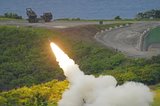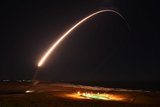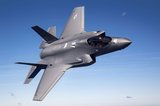Modi declares India 'space superpower' as satellite downed by missile
India said it had destroyed a low-orbiting satellite in a missile test that proved the nation was among the world's most advanced space powers.
In a rare address to the nation on 27 March 2019, just weeks before a national election, Prime Minister Narendra Modi said India had joined the US, Russia and China in accomplishing the feat. A missile fired from a testing facility in Odisha, eastern India, downed the satellite at an altitude of around 300km (185 miles) in ‘a difficult operation’ that lasted around three minutes, Modi said.
‘This is a proud moment for India,’ Modi added, in his first televised national address since late 2016. ‘India has registered its name in the list of space superpowers. Until now, only three countries had achieved this feat.’ It comes a month after Indian and Pakistani fighter jets engaged in a dogfight over the disputed border in Kashmir - a serious military escalation between the nuclear-armed rivals.
Modi said the anti-satellite missile (ASAT) test was peaceful, and not designed to create ‘an atmosphere of war’. ‘I want to assure the world community that the new capability is not against anyone. This is to secure and defend... fast-growing India.’
But analysts said it would not go unnoticed in China and Pakistan, India's chief rivals in the nuclear-armed region, and could be interpreted as a show of New Delhi's advancing military capabilities. ‘This is less about shooting down satellites and more about proving high-altitude 'hit-to-kill' proficiency, which is the core competency required to get good at a range of things - including defence against nuclear-capable ballistic missiles,’ Ankit Panda, of the Federation of American Scientists, told AFP. ‘This is how the message is going to be perceived in Islamabad.’
A spokesman for Pakistan's foreign ministry said countries that had ‘strongly condemned’ the demonstration of similar technologies in the past should work towards preventing the militarisation of space. ‘Boasting of such capabilities is reminiscent of Don Quixote's tilting against windmills,’ the spokesman said.
Star wars
The US and the former Soviet Union carried out their first successful anti-satellite missile tests in 1985, and China in 2007. All are now said to be working on so-called Star Wars laser weapons to destroy satellites.
With satellites increasingly important because of their intelligence gathering role - and major nations seeking to gain a foothold in space - the US in 2014 rejected a Russian-Chinese proposal for a treaty to ban weapons in space, saying it was ‘fundamentally flawed’ because of the lack of weapons verification measures.
India's foreign ministry said the country ‘has no intention of entering into an arms race in outer space’.
‘We have always maintained that space must be used only for peaceful purposes,’ the ministry said. ‘At the same time, the government is committed to ensuring the country's national security interests and is alert to threats from emerging technologies.’
Modi said the test did not violate any international treaties and was for the betterment and safety of India's 1.3 billion people. But NASA and the Pentagon warned that ASAT tests create potentially dangerous debris fields in Earth's orbit.
‘Some people like to test anti-satellite capabilities intentionally, and create orbital debris fields that we today are still dealing with,’ NASA chief Jim Bridenstine told Congress Wednesday. ‘And those same countries come to us for space situational awareness, because of the debris field that they themselves created.’
Acting Pentagon chief Patrick Shanahan said not having rules was ‘worrisome’. ‘We all live in space. Let's not make it a mess,’ Shanahan said. ‘Space should be a place where we can conduct business, space should be a place where people have freedom to operate. We cannot make it unstable, we cannot create a debris problem that ASAT tests create.’
India has made giant strides in its space journey in recent years. It launched a record 104 satellites in a single mission in 2017, and has also built a reputation for low-cost space exploration and science missions.
More from Defence Notes
-
![How might European countries look to tackle drone incursions?]()
How might European countries look to tackle drone incursions?
Disruption of infrastructure in Europe, whether by cyberattack, physical damage to pipelines or uncrewed aerial vehicles flying over major airports, as has happened more recently, is on the rise. What is the most effective way of countering the aerial aspect of this not-so-open warfare?
-
![Taiwan approved for $11 billion weapon purchase from US]()
Taiwan approved for $11 billion weapon purchase from US
The US State Department’s approval of a multi-billion-dollar sale of weapons to Taiwan includes tactical mission networks equipment, uncrewed aerial systems, artillery rocket systems and self-propelled howitzers as well as anti-tank guided missiles.
-
![Ireland spells out $2.3 billion shopping list in five-year defence spending plan]()
Ireland spells out $2.3 billion shopping list in five-year defence spending plan
Ireland’s multi-annual investment in capital defence spending is set to rise from €300m in 2026 to €360m in 2029–2030 with major upgrades across land, air, maritime and cyber domains.
-
![Canada to deepen integration of multi-domain capabilities to strengthen its defences]()
Canada to deepen integration of multi-domain capabilities to strengthen its defences
The Canadian Department of National Defence has created new organisations to manage the procurement and integration of all-domain solutions and allocated US$258.33 million to strengthen production capacities.
-
![US National Security Strategy prioritises advanced military capabilities and national industry]()
US National Security Strategy prioritises advanced military capabilities and national industry
The 2025 NSS has emphasised investment in the US nuclear and air defence inventory and national industry, but it leaves multiple unanswered questions on how the White House will implement this approach.
-
![Canada set to look away from its neighbour and across the Atlantic for partners]()
Canada set to look away from its neighbour and across the Atlantic for partners
While non-EU UK struggles to join the Security Action for Europe initiative, which provides loans for defence programmes, Canada has become the first country outside Europe to get access – and did so for a nominal fee.
























